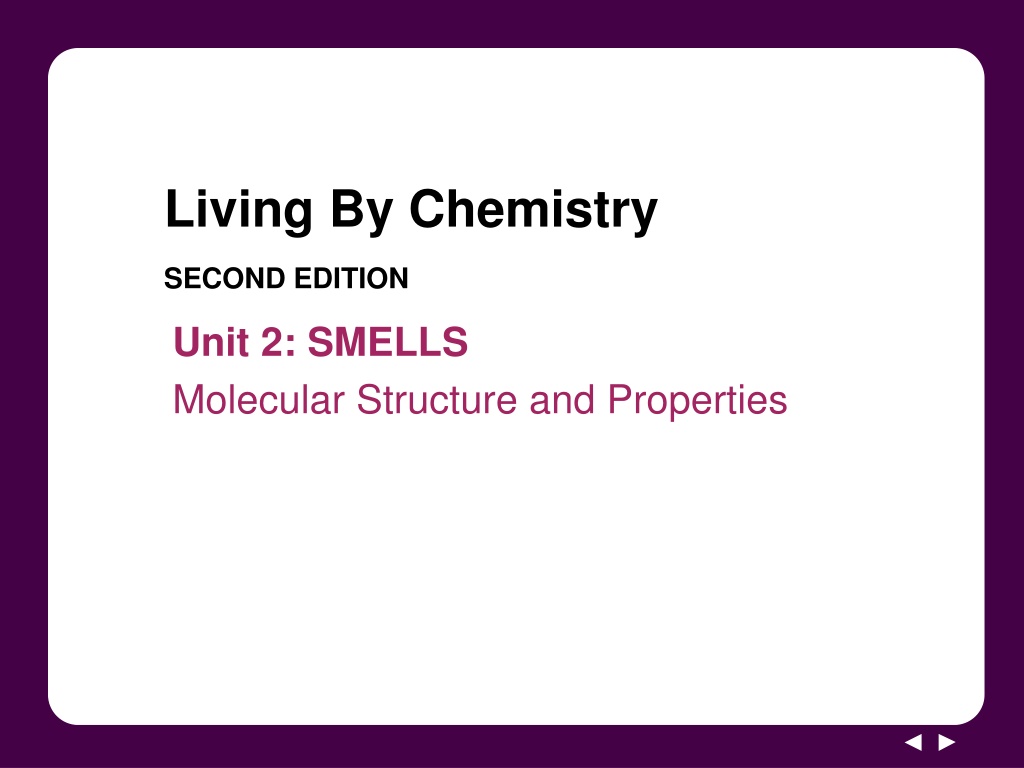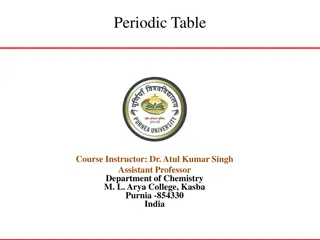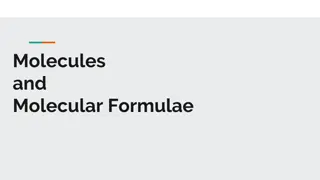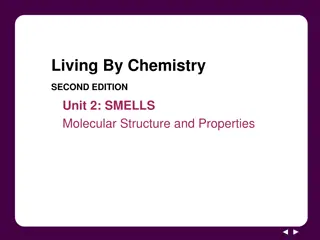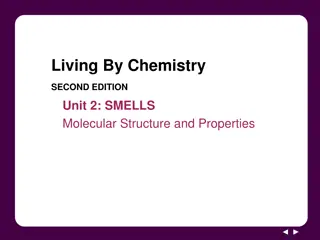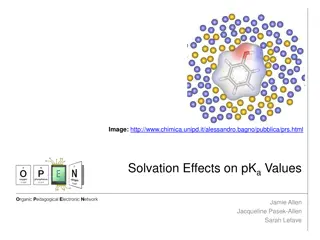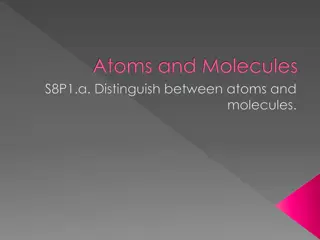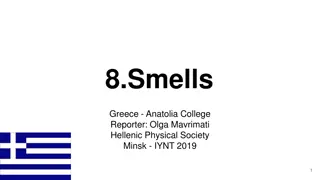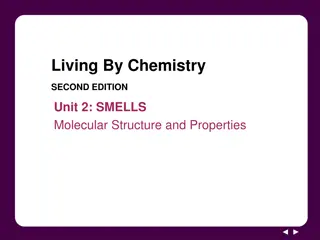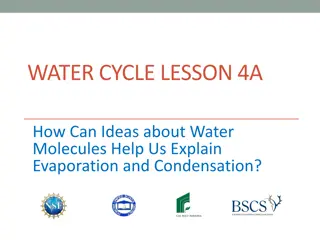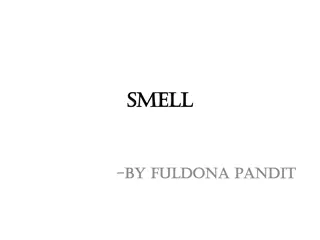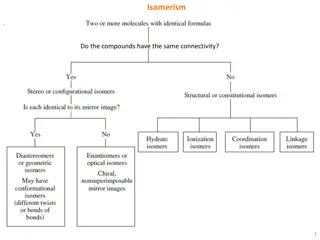Understanding Smell and Molecules in Chemistry
Explore the relationship between molecular structure and smell in chemistry through concepts of polarity, phase, and size. Learn how different molecules evoke scents and why some substances have distinctive smells while others do not. Dive into discussions on volatile molecular solids, aromatic compounds, and predicting smell based on composition. Get ready to uncover the science behind the sense of smell with practical examples and engaging activities.
Download Presentation

Please find below an Image/Link to download the presentation.
The content on the website is provided AS IS for your information and personal use only. It may not be sold, licensed, or shared on other websites without obtaining consent from the author. Download presentation by click this link. If you encounter any issues during the download, it is possible that the publisher has removed the file from their server.
E N D
Presentation Transcript
Living By Chemistry SECOND EDITION Unit 2: SMELLS Molecular Structure and Properties
Lesson 46: Sniffing It Out Phase, Size, Polarity, and Smell
ChemCatalyst 1. If you place an open perfume bottle and a piece of paper in a sunny window, the aroma of the perfume will soon fill the air, but you won t smell the paper at all. Explain what is going on. 2. What is the heat from the Sun doing to the perfume to increase the smell?
Key Question What generalizations can you make about smell and molecules?
You will be able to: explain the connections between smell and polarity, molecular size, phase, and type of bonding predict whether a molecule will have a smell based on its structure, composition, and phase
Prepare for the Activity Work in pairs.
Discussion Notes Phase and molecular size both play a role in smell properties. Polarity determines the smell of small molecules. Many solids do not evaporate into gases and therefore don t have a smell.
Discussion Notes (cont.) Compound Phase Structural Formula methane CH4 gas Octane C8H18 liquid Polystyrene (C8H8)n(repeating units) solid
Discussion Notes (cont.) Molecular substances tend to have a smell because it is easy for them to become airborne. Substances that are liquids at ordinary temperatures tend to have a smell.
Discussion Notes (cont.) Molecular solids are volatile and have a smell.
Wrap Up What generalizations can you make about smell and molecules? Small molecules have a smell if they are polar. Medium-size molecules tend to have a smell whether or not they are polar. The smells of medium-size molecules can be predicted by looking at shape and functional group. Very large molecules do not have a smell because they do not evaporate and enter the nose.
Wrap Up (cont.) Nonmolecular solids (e.g., salts, metals) do not have a smell because they do not evaporate.
Check-In Which of these will have a smell? Explain your reasoning. Substance Structure Phase Cl-Ca2+ Cl-(repeating throughout the solid in three dimensions) CaCl2, calcium chloride solid C8H8O3, vanillin liquid HCN, hydrogen cyanide gas
